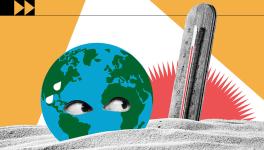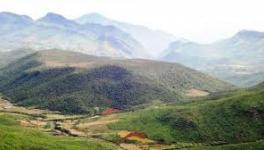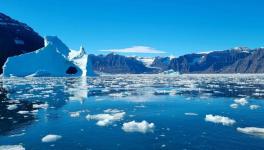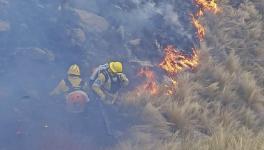Half of World’s Glaciers Will Vanish by 2100, Even if 1.5 Degrees Celsius Threshold is Met: Study

Representational image. | Image Courtesy: Flickr
Glacial melt due to global warming and the accompanying sea level rise appear as great threats to the survival of billions of people around the world. Adding to the body of research on glacial melting, a recent study published in Science estimates that half of the world’s glaciers will disappear by 2100, and the quarter of it would occur within the next thirty years.
The study rings the alarm bell saying that the glacial melt is unavoidable even if the 1.5 degree Celsius threshold is met in complying with the Paris Agreement. Continuing with the current trend of global heating at 2.7 degree Celsius, the glacial loss would be around 68%, thus posing the severest of threats.
The Paris Agreement aims to limit the rise in global temperature to 2 degrees Celsius above the pre-industrial temperature and preferably by 1.5 degrees Celsius in this century. To achieve the limit of 1.5 degrees Celsius, global emissions will have to be reduced by about 50% by the year 2030.
Man-made climate change has brought the planet to such an extent that going back is not at all possible anymore, and neither can we correct anything in order to avoid unprecedented disasters in the near future, which the study suggests. Going with the estimates of the study, one can imagine glaciers disappearing from Asia, Central Europe, Canada and the US. However, we ought to implement certain immediate measures to avoid situations that may appear extreme even to our existence.
The glacial disappearance will contribute significantly to the sea level rise and threaten water supply to a billion people. Floods will also be an obvious outcome of such occurrences. The study published in Science considered all the glaciers except Antarctica and Greenland ice sheets. This new estimate suggests a higher melting than the previous ones. The study also estimates the number of glaciers that will be vanished rather than the total mass loss.
The study used the data from satellite images of two decades and brought out the estimation. And this estimation is thought to be more accurate because it uses satellite imagery of glaciers. Earlier, researchers used to get data on a few specific glaciers and then extrapolate it, but now, with satellite imageries, researchers can get data from all of the two lakhs glaciers of the world. This helped researchers estimate the exact numbers of loss of glaciers under different situations.
Commenting on the study and its findings, David Rounce, a civil and environmental engineer at Carnegie Mellon University and the University of Alaska, Fairbanks and the lead author, said in a statement, “This is the first time we have isolated the number of glaciers that will be lost – before it was the total mass loss.”
The new study also highlights the losses of the lower mountain ranges, which are great sources of water and livelihood for millions of people. According to it, most of the glaciers projected to be lost will be the small ones, with an area of less than a square kilometre. These glaciers are the most vulnerable ones. “When we think about the locations where most people see and visit glaciers, it’s really in locations where they’re accessible, like in central Europe, or in high mountain Asia. In these regions, there are a lot of smaller glaciers. They’re really at the core of the societies and economies of those locations,” Rounce explained in his statement.
Glaciers are not only contributing to the sea level rise but are also crucial for sustainability. For example, in India and China, the Himalayan glaciers are crucial for many important rivers and the vanishing of glaciers will bring a serious crisis to billions of people. Similarly, “In California, the water needed to sustain agriculture comes from glaciers directly from the end of July. In Spain, the disappearance of the Sierra Nevada glaciers means an almost complete reduction in water availability there from that time onwards, and the same applies to the glaciers in the Pyrenees,” commented Antonio Ruiz de Elvira, professor at the University of Alcala, who was not involved in the study. He also commented that the new study makes the earlier partial data more concrete.
Lower mountains, such as the Alps and the Pyrenees, are the worst-affected, according to the study. The Alps will witness its glaciers getting smaller by 70% of the current volume by 2050. The study also said that many smaller glaciers might have disappeared already, resulting in a significant loss of biodiversity.
Get the latest reports & analysis with people's perspective on Protests, movements & deep analytical videos, discussions of the current affairs in your Telegram app. Subscribe to NewsClick's Telegram channel & get Real-Time updates on stories, as they get published on our website.























